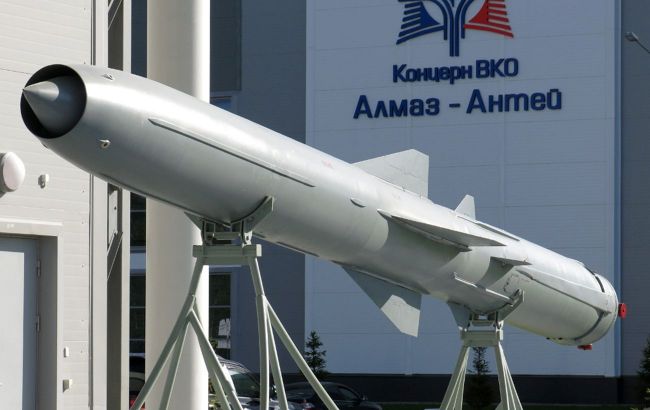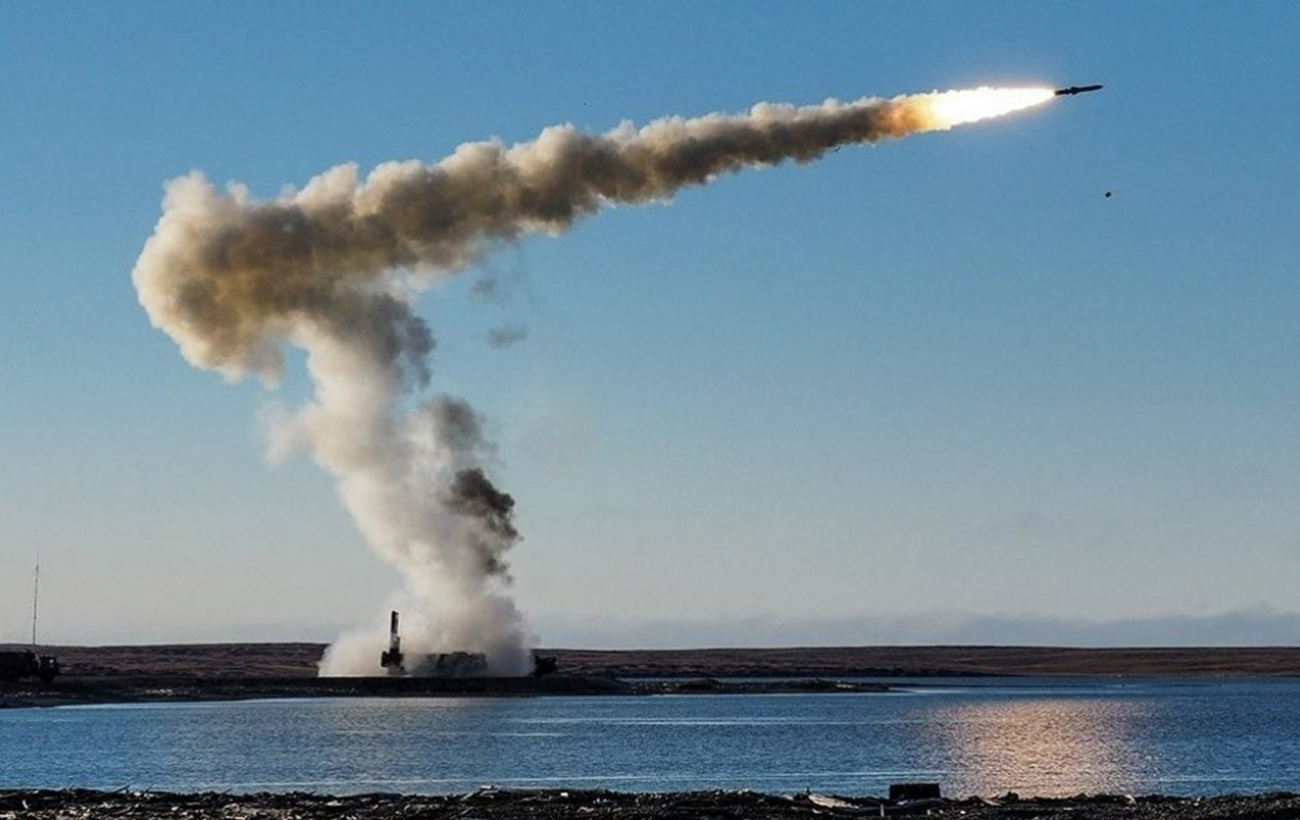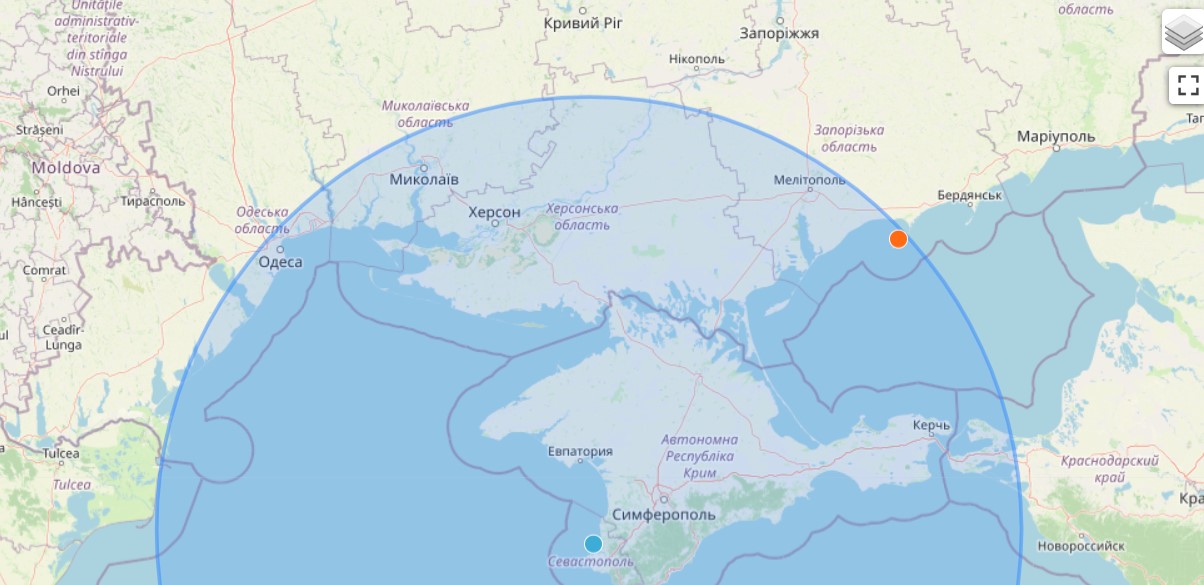Supersonic speed and complex trajectory: Key insights into Oniks missiles and why they are hard to intercept
 Photo: Oniks missiles attack Ukraine again after a two-month lull (wikimedia.com)
Photo: Oniks missiles attack Ukraine again after a two-month lull (wikimedia.com)
Russian Oniks missiles are once again striking targets on the territory of Ukraine. They possess a set of characteristics that, unfortunately, Ukrainian air defense still cannot effectively intercept.
RBC-Ukraine provides more details about the Oniks missiles and why it is challenging to shoot them down.
To prepare this report, the following sources were used: Air Force data, statements by Air Force spokesperson Yurii Ihnat, statements by the Southern Defense Forces spokeswoman Natalia Humeniuk, and wikipedia.org data.
The Russian Federation intensified its Oniks missile strikes in late July, shortly after withdrawing from the Black Sea grain deal. At that time, they targeted port and critical infrastructure in Odesa and the region, with hits on grain and oil terminals, as well as reservoirs and loading equipment.
Since then, the aggressor took a two-month break, but on the night of September 23, they launched Oniks missiles again in a combined attack on the Odesa region facilities. As a result, there were damages in a recreational zone, but there were no casualties or injuries. According to the spokeswoman for the Southern Defense Forces, Natalia Humeniuk, the missiles were launched from the Bastion coastal system in the Russian-occupied Crimea.
On the night of September 25, the Russians used 2 more Oniks missiles along with Kalibr missiles and Shahed kamikaze drones in an attack on Odesa.
"The enemy hit the port infrastructure. Significant damage was done to the maritime station in Odesa. A fire broke out in the building of the pre-port hotel, which has not been in operation for several years... Grain storage facilities were destroyed by Oniks missiles. But people were not harmed," the statement from the Southern Defense Forces says.
According to the Dumska media, the first Oniks hit the seaport hotel in Odesa, while the second one destroyed a grain storage facility that could have stored 40 thousand tons of products.
According to the Air Force, the success rate against drones and sea-based cruise missiles was nearly 100%. As for the Oniks missiles, they have once again proven difficult to intercept effectively.
Key facts about the Oniks missiles
- They are supersonic anti-ship missiles of medium range.
- They were developed in the Soviet Union in the 1970s and are designed for strikes against surface vessels, naval groups, ships, and ground infrastructure. They are resistant to fire and electronic countermeasures.
- Oniks missiles can be launched from various platforms, including submarines, ships, and aircraft. They are typically used with coastal complexes like Bastion for strikes on Ukrainian territory. As in the latest attack, when Bastions from the occupied Sevastopol were used.
- According to the manufacturer's claims, Oniks is almost invulnerable to anti-aircraft defenses. Its radar-guided homing head allows it to destroy targets both above water and on land.

Photo: Oniks missile launch from the Bastion coastal complex (defense-ua.com)
Specifications
- Length: 8 meters (aviation variant: up to 6.2 meters)
- Weight: 3,000 kilograms (launch weight, up to 4,000 kilograms with transport-launch container)
- Maximum speed: 2.6 Mach or 3,182 kilometers per hour at an altitude of 14,000 meters
- Surface-skimming speed: 2 Mach or 2,448 kilometers per hour
- Flight altitude: Up to 14,000 meters (cruise phase) and 10-15 meters (terminal phase)
- Range: 300 kilometers (basic) and up to 800 kilometers (Oniks-M)
- Warhead weight: up to 300 kilograms.
Export versions of the Yakhont missiles are in the arsenals of Syria, Vietnam, India, and Indonesia. Additionally, there is a modernized version called Oniks-M with a firing range of up to 800 kilometers.
One distinctive feature of these missiles is their flight along a ballistic trajectory at a high altitude and then falling to a very low altitude before approaching the target. During the cruising phase, Oniks missiles go up to approximately 14 kilometers and then drop to 10-15 meters while flying in a terrain-hugging mode.
How many of these missiles does Russia have, and where can they reach
In the fall of 2022, Defense Minister Oleksii Reznikov provided data indicating that Russia had 347 out of 470 Oniks missiles. This represents roughly 74% of the pre-war stockpile.
These missiles have been used for strikes on Ukraine since the spring of 2022. In April, the Odesa airport was attacked from the territory of Crimea, followed by a strike on an airfield in the city of Artsyz in May. In June 2022, a missile was launched at Ochakiv, and in July, as many as 10 Oniks missiles were launched at Mykolaiv. Over the course of a year of full-scale invasion, Russia launched around 40 missiles at targets in the Odesa region alone. In the summer, this number increased by approximately two dozen more missiles.
Speaking of current stockpiles and production, it is difficult to estimate their exact quantities. Air Force spokesperson Yurii Ignat emphasizes that this is an older development but is likely still being modernized and improved.
The straight-line distance from Sevastopol to Odesa is 300 kilometers, and from Cape Tarkhankut, it's approximately 180 kilometers. In the first case, an Oniks missile can reach its target in about 6-7 minutes, and in the second case, it takes only 4 minutes. Due to their speed, Ukrainian cities may not even have time to sound an air raid alarm, which is why it sometimes occurs after the explosions.

Photo: Radius the Oniks missile can reach from occupied Sevastopol (mapsdirections.info)
Sources provide varying flight ranges. But even if we consider a 300-kilometer range for the basic version, Russia can shoot Oniks missiles from occupied Crimea to target the entire south of Ukraine. According to Ihnat, if the missile ascends to an altitude of over 10 kilometers during the cruise phase, it can cover a distance of up to 600 kilometers.
Why Ukrainian air defense cannot intercept Oniks
In 2022, there was confusion about Ukraine's capabilities to intercept anti-ship missiles. The Operational Command South initially reported the elimination of Oniks and Kh-22 missiles, but this information was later refuted. Therefore, even as of today, Ukraine lacks the means to effectively intercept these missiles.
The main problem lies in the high speed of flight and the low altitude during the terminal phase. Under such conditions, according to Yurii Ihnat, the only option is to try to affect the trajectory using electronic countermeasures. However, deviating from the course does not guarantee that the Oniks missile will miss its target entirely.
In the summer of 2023, Ihnat mentioned that additional air defense systems such as Patriot and SAMP-T could help protect against Oniks.
"If we had the additional systems, they would protect the infrastructure of Odesa and not just the port infrastructure," he stated in July.
However, the most effective way to counter these missiles is to eliminate their launch platforms, namely the coastal Bastion complexes in occupied Crimea. In August, there were reports of the destruction of such a complex following a Ukrainian attack on Russian air defense facilities at Cape Tarkhankut, but this information was not confirmed.
Speaking of the situation on the night of September 23, Ihnat hinted that Ukrainian forces might have successfully affected the trajectory of the Oniks missile. It hit a recreational area, so "something affected its flight."
The recent combined attack, as mentioned earlier, also involved Kalibr missiles and Shahed drones, which changed direction to distract the air defenses and maximize damage. At first, they flew to the central part of Ukraine, after that they turned around and headed for Odesa along the border with Moldova.
Ukrainian air defenses demonstrated flawless work against Shaheds and Kalibr missiles. However, it cannot be said yet for Oniks missiles.
"Intercepting Oniks missiles is difficult. They can be countered, but existing air defense systems do not work against them. These missiles are supersonic and fly very low. Therefore, it is impossible to intercept them with existing anti-aircraft defense systems," Ihnat concluded.

